Antibody responses to the full-length VAR2CSA and its DBL domains in Cameroonian children and teenagers
- PMID: 27814765
- PMCID: PMC5097422
- DOI: 10.1186/s12936-016-1585-y
Antibody responses to the full-length VAR2CSA and its DBL domains in Cameroonian children and teenagers
Abstract
Background: Antigenic variation of Plasmodium falciparum erythrocyte membrane protein 1 is a key parasite mechanism for immune evasion and parasite survival. It is assumed that the number of parasites expressing the same var gene must reach high enough numbers before the host can produce detectable levels of antibodies (Ab) to the variant. VAR2CSA is a protein coded for by one of 60 var genes that is expressed on the surface of infected erythrocytes (IE) and mediates IE binding to the placenta. The idea that Ab to VAR2CSA are pregnancy-associated was challenged when VAR2CSA-specific Ab were reported in children and men. However, the frequency and conditions under which Ab to VAR2CSA are produced outside pregnancy is unclear. This study sought to determine frequency, specificity and level of Ab to VAR2CSA produced in children and whether children with hyperparasitaemia and severe malaria are more likely to produce Ab to VAR2CSA compared to healthy children.
Methods: Antibody responses to a panel of recombinant proteins consisting of multiple VAR2CSA Duffy-binding-like domains (DBL) and full-length VAR2CSA (FV2) were characterized in 193 1-15 year old children from rural Cameroonian villages and 160 children with severe malaria from the city.
Results: Low Ab levels to VAR2CSA were detected in children; however, Ab levels to FV2 in teenagers were rare. Children preferentially recognized DBL2 (56-70%) and DBL4 (50-60%), while multigravidae produced high levels of IgG to DBL3, DBL5 and FV2. Sixty-seven percent of teenage girls (n = 16/24) recognized ID1-ID2a region of VAR2CSA. Children with severe forms of malaria had significantly higher IgG to merozoite antigens (all p < 0.05), but not to VAR2CSA (all p > 0.05) when compared to the healthy children.
Conclusion: The study suggests that children, including teenage girls acquire Ab to VAR2CSA domains and FV2, but Ab levels are much lower than those needed to protect women from placental infections and repertoire of Ab responses to DBL domains is different from those in pregnant women. Interestingly, children with severe malaria did not have higher Ab levels to VAR2CSA compared to healthy children.
Keywords: Antibody; Children; Malaria; VAR2CSA.
Figures
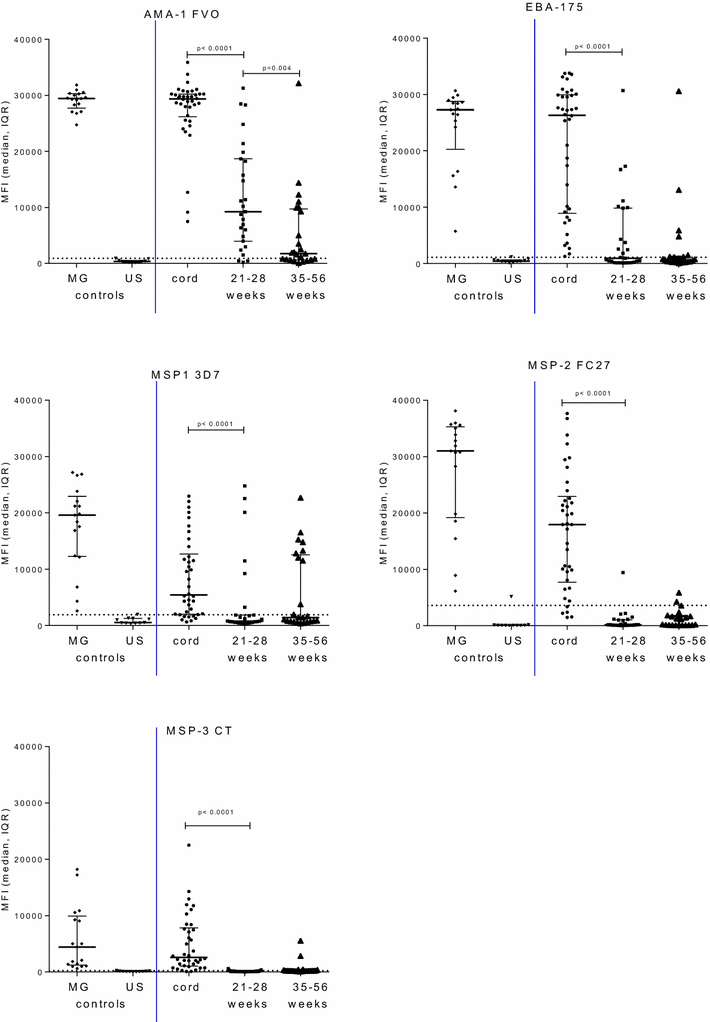
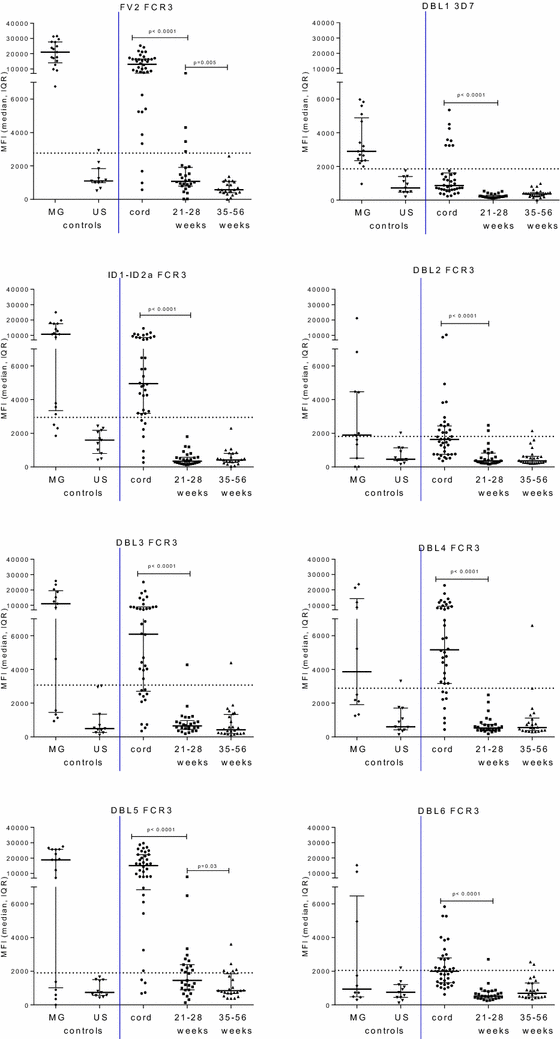
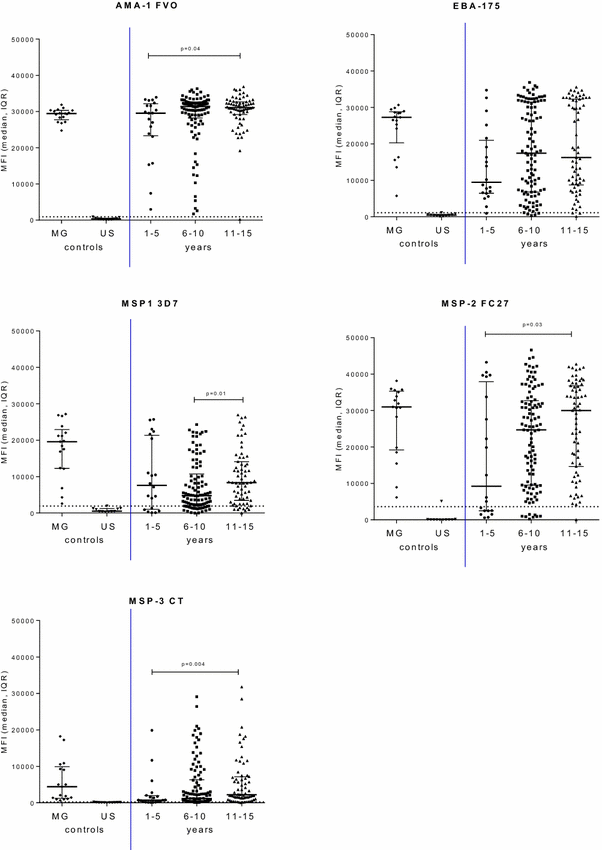
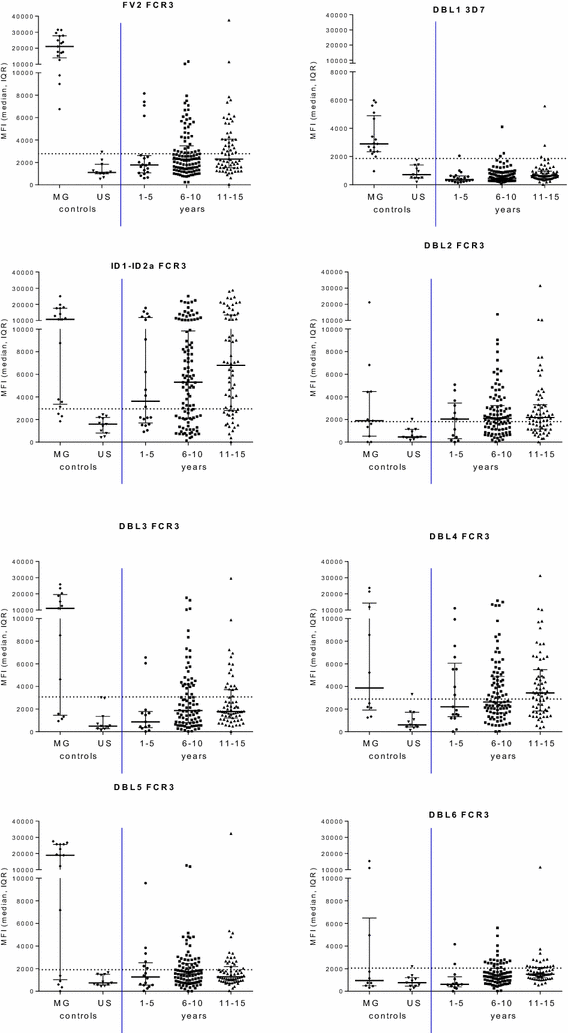
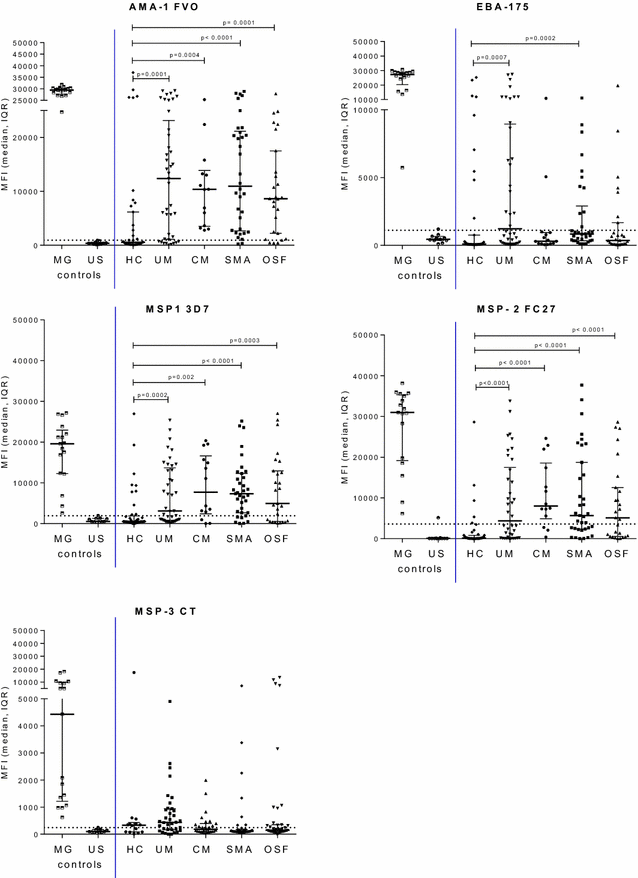
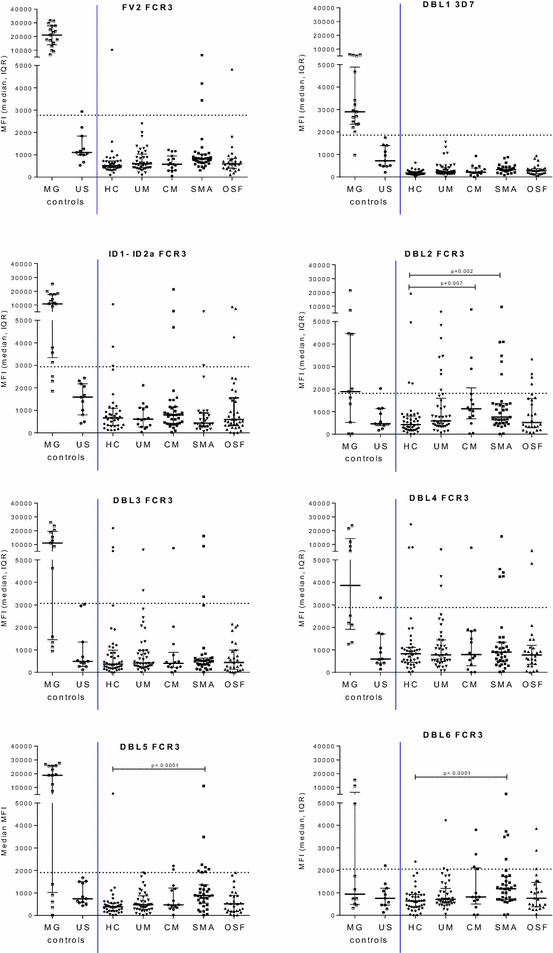
Similar articles
-
The antibody response of pregnant Cameroonian women to VAR2CSA ID1-ID2a, a small recombinant protein containing the CSA-binding site.PLoS One. 2014 Feb 4;9(2):e88173. doi: 10.1371/journal.pone.0088173. eCollection 2014. PLoS One. 2014. PMID: 24505415 Free PMC article.
-
Comparison of the specificity of antibodies to VAR2CSA in Cameroonian multigravidae with and without placental malaria: a retrospective case-control study.Malar J. 2015 Dec 1;14:480. doi: 10.1186/s12936-015-1023-6. Malar J. 2015. PMID: 26626275 Free PMC article.
-
VAR2CSA Domain-Specific Analysis of Naturally Acquired Functional Antibodies to Plasmodium falciparum Placental Malaria.J Infect Dis. 2016 Aug 15;214(4):577-86. doi: 10.1093/infdis/jiw197. Epub 2016 May 18. J Infect Dis. 2016. PMID: 27190180 Free PMC article.
-
The Development, Fine Specificity, and Importance of High-Avidity Antibodies to VAR2CSA in Pregnant Cameroonian Women Living in Yaoundé, an Urban City.Front Immunol. 2021 Feb 26;12:610108. doi: 10.3389/fimmu.2021.610108. eCollection 2021. Front Immunol. 2021. PMID: 33717094 Free PMC article.
-
VAR2CSA Antibodies in Non-Pregnant Populations.Trends Parasitol. 2021 Jan;37(1):65-76. doi: 10.1016/j.pt.2020.09.012. Epub 2020 Oct 13. Trends Parasitol. 2021. PMID: 33067131 Review.
Cited by
-
Comparative analysis of IgG and IgG subclasses against Plasmodium falciparum MSP-119 in children from five contrasting bioecological zones of Cameroon.Malar J. 2019 Jan 22;18(1):16. doi: 10.1186/s12936-019-2654-9. Malar J. 2019. PMID: 30670064 Free PMC article.
-
Acquisition of antibodies to Plasmodium falciparum and Plasmodium vivax antigens in pregnant women living in a low malaria transmission area of Brazil.Malar J. 2022 Dec 1;21(1):360. doi: 10.1186/s12936-022-04402-4. Malar J. 2022. PMID: 36457056 Free PMC article.
-
The immunoglobulin G antibody response to malaria merozoite antigens in asymptomatic children co-infected with malaria and intestinal parasites.PLoS One. 2020 Nov 10;15(11):e0242012. doi: 10.1371/journal.pone.0242012. eCollection 2020. PLoS One. 2020. PMID: 33170876 Free PMC article.
-
IgG Responses to the Plasmodium falciparum Antigen VAR2CSA in Colombia Are Restricted to Pregnancy and Are Not Induced by Exposure to Plasmodium vivax.Infect Immun. 2018 Jul 23;86(8):e00136-18. doi: 10.1128/IAI.00136-18. Print 2018 Aug. Infect Immun. 2018. PMID: 29784859 Free PMC article.
-
Progress and Insights Toward an Effective Placental Malaria Vaccine.Front Immunol. 2021 Feb 25;12:634508. doi: 10.3389/fimmu.2021.634508. eCollection 2021. Front Immunol. 2021. PMID: 33717176 Free PMC article. Review.
References
MeSH terms
Substances
Grants and funding
LinkOut - more resources
Full Text Sources
Other Literature Sources
Research Materials

